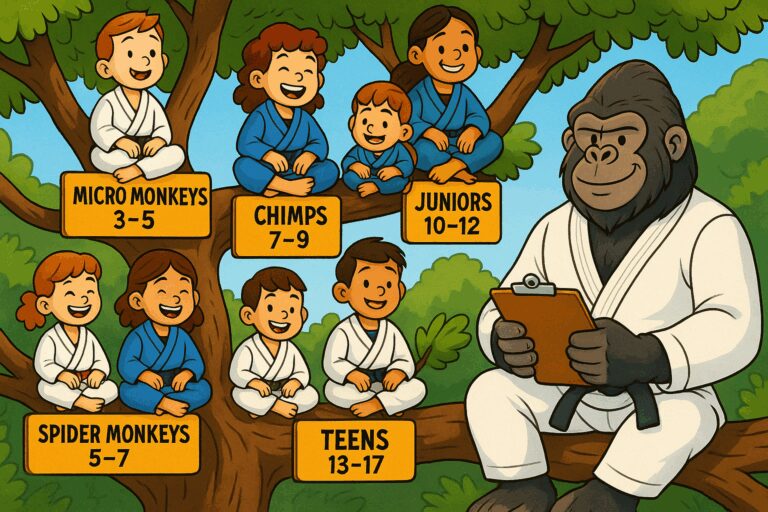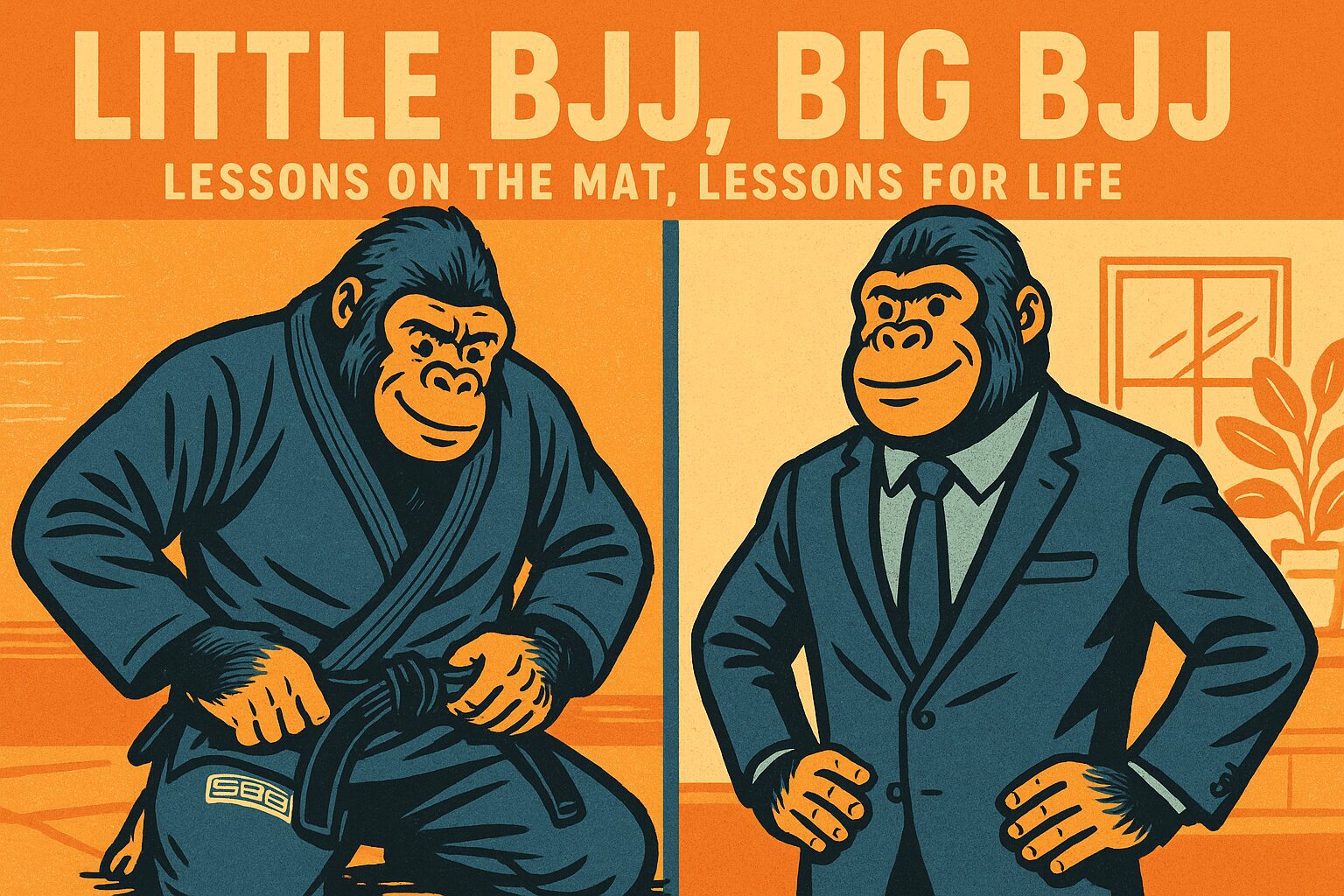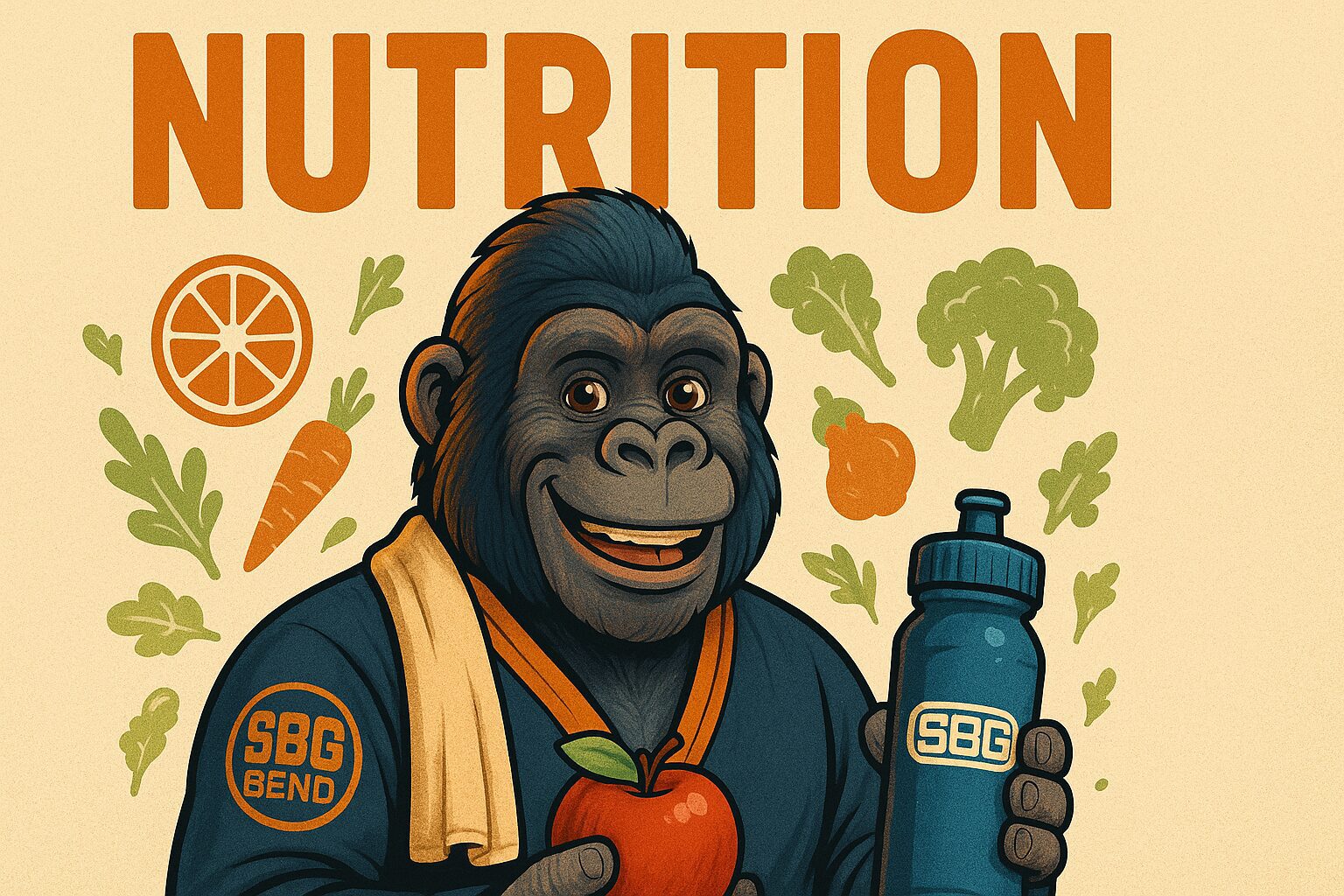
Picture a Bend family on a Saturday morning: Mom ties three-year‑old Mia’s tiny belt while her big brother Jake, fifteen, scrolls highlights of last night’s UFC card. Dad herds everyone toward the car, coffee in hand, wondering how one gym can handle five wildly different ages—let alone keep them engaged.
The answer is Growing Gorillas, SBG Bend’s age‑smart Brazilian Jiu Jitsu track. Inspired by child‑development research (CDC Positive Parenting Tips, APA developmental milestones) and tempered by Matt Thornton’s Truth · Aliveness · Adaptability ethos, the program grows with kids—layering coordination, confidence, and critical‑thinking exactly when brains are primed to absorb them.
Stop 1: Mia the Micro Monkey (3‑5)
Mia totters onto the mat clutching her pink water bottle. Coach Sarah kneels to eye level—no baby talk—and asks, “Can you find your spot on the white line?” Boom: first independence rep logged. Within ten minutes Mia is shrimping across the floor, giggling as she discovers she can move her body backward on purpose. Practice at home tonight? “Shrimp race to the bathtub, Mia!” Dad high‑fives, Mom snaps the pic.Stop 2: Leo the Spider Monkey (5‑7)
Next up, six‑year‑old Leo bursts through the door already tying his own belt—Spider Monkeys pride themselves on self‑service. Coach Marcus cues the Life‑Skill mantra of the month—Patience. Leo recites it, then leads warm‑ups with forward and backward rolls. At this age, kids crave meaningful choices, so after class Marcus asks, “Apple‑PB or bell‑pepper sticks for your recovery snack?” Leo chooses peppers; cue tiny victory dance.Stop 3: Ava the Chimp (7‑9)
Nine‑year‑old Ava hustles in. Her mission today: lead part of the group warm‑up and remember everyone’s name in the circle. Research shows that self‑esteem spikes when kids master social tasks, so Coach Mel hands Ava the whistle. Later, at dinner, she proudly explains to Grandpa what base, posture, structure mean—and why they matter when little brothers invade her room.Stop 4: Dylan the Junior (10‑12)
Dylan’s middle‑school schedule is nuts, but an hour on the mat gives structure. Coach Alex has him track his training goals in a logbook—pre‑teens thrive on project ownership. Tonight’s project: film his guard‑pass drill, critique it, then try again. Complex thought? Check. Self‑assessment? Double‑check. After class, Dylan scans his own membership card—small act, big message: “You’re responsible for your journey.”Final Stop: Jake the Teen Titan (13‑17)
Jake, fifteen, is navigating growth spurts and friend drama. On the Teen mat he finds mentors his age can’t supply. Coach Brian invites him to assist with the Spider Monkey class—teaching under supervision builds leadership and cements technique. Later, Jake and Dad trade triangle‑choke details over dinner instead of silent scrolling. Mom notes: family meal accomplished.Science + Sweat = Bulletproof Kids
Each stage aligns with what developmental psychologists say kids are ready for: fine‑motor exploration in preschool, self‑choice in early grades, peer leadership in tweens, and autonomy with safety nets in teens. We simply wrap those needs in mat time, positive peer pressure, and a tribe that shouts encouragement louder than self‑doubt.Curious where your young primate fits on this journey? Learn more about classes. Let’s grow Gorillas—one shrimp, story, and success sheet at a time.





